Who doesn’t love Scroll Flasks?
21 November 2012 (R•052915)
![]() Being a color run ‘kinda-guy’ I just gotta’ say ‘‘Who doesn’t love Scroll Flasks?” Don’t cringe, I guess I coulda’ called this “Scrolling thru some Scrolls.” Anyway, credit for this post belongs to Mike Stephano as the first two pictures of gorgeous Scroll Flasks are from Mike’s collection.
Being a color run ‘kinda-guy’ I just gotta’ say ‘‘Who doesn’t love Scroll Flasks?” Don’t cringe, I guess I coulda’ called this “Scrolling thru some Scrolls.” Anyway, credit for this post belongs to Mike Stephano as the first two pictures of gorgeous Scroll Flasks are from Mike’s collection.
Read: A Stroll through the Scrolls
The Scroll Flasks represent Group IX – Scroll or Violin Flasks in the The McKearin Historical Flask Groups. There are 52 in the Scroll group.
According to Historic Glasshouse, antique scroll flasks are easy to spot thanks to their distinctive shape. While aqua is the most commonly found color by far, other brilliant colors (greens, ambers, blues) are not infrequently encountered and fetch top dollar by collectors. George and Helen McKearin described the scroll (or violin) flasks in their book, American Glass, in the 1940s with details on 51 different molds. This list was later expanded with many variants in American Bottles and Flasks and Their Ancestry. Often, the difference between molds for scroll flasks comes down to the precise placement and shape of embossed stars and other details.
Scroll flasks were made by blowing hot glass into a two piece iron mold. The hinged mold was then opened and the bottle was removed while still attached to the blowpipe. An assistant would then attach another rod (called a pontil) to the base of the bottle. The glass blower could then detach the bottle from its lip by shearing the still soft glass. Most often you will find scroll flasks with a plain sheared lip. Some flasks would receive additional work to finish the mouth and lip. Commonly found are the applied band of glass and, infrequently, an applied lip.
S T E P H A N O S C R O L L F L A S K S
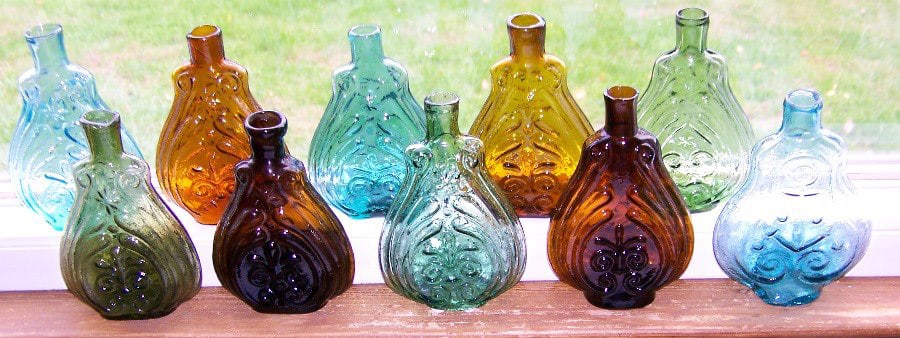
Window shot of my 1/2 pint scrolls. No, the GIX-41 is not sapphire, I could only wish..the lighting hints at it being that color though doesn’t it? Just a deep mid-western aqua – Mike Stephano
S C R O L L F L A S K G A L L E R Y
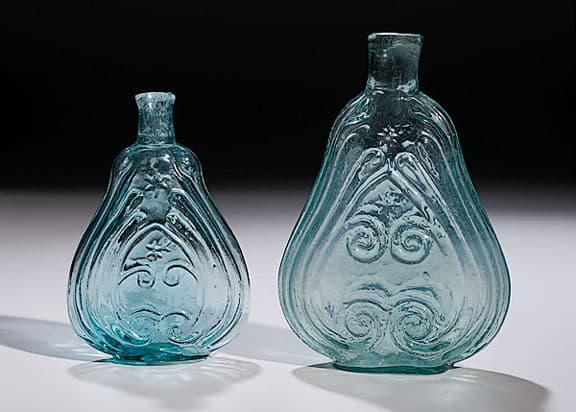
Two aqua Scroll Flasks – American, ca 1852-64. A pint example possibly by the Lancaster NY Glass Works, GIX-10, with sheared plain lip and smooth base with molded 5 x 5; 7.25″ high. Together with a half-pint GIX-31 with flat base and rough pontil; 5.75″ high. – Cowan’s Auctions
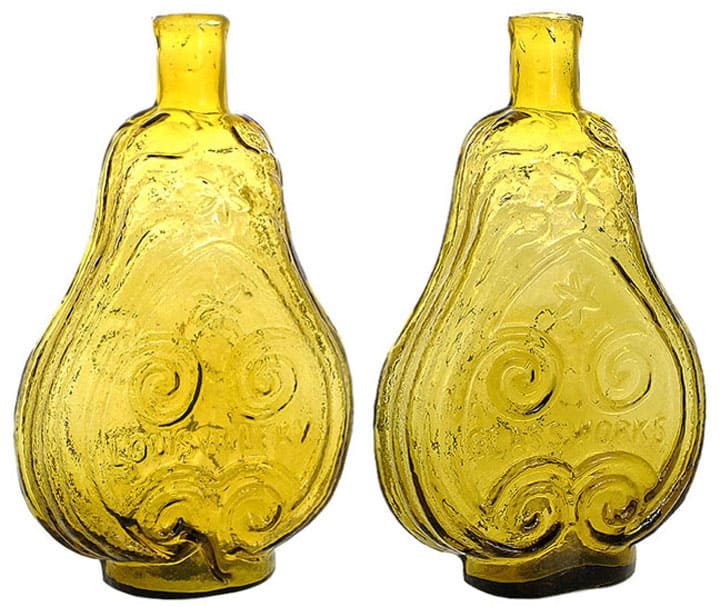
Lot 59. Scroll Flask, “LOUISVILLE, KY. – GLASS WORKS“, (GIX-6), Louisville Glass Works, Louisville, Kentucky, ca. 1845 – 1855, olive yellow quart, red iron pontil, sheared and tooled lip, perfect. Crude pebbly glass, brilliant color, as good as it gets! Rarely seen in aqua and never seen in as stunning a color as this one!mWinning Bid: $ 27,000 (37 Bids) – Glass Works Auction #92
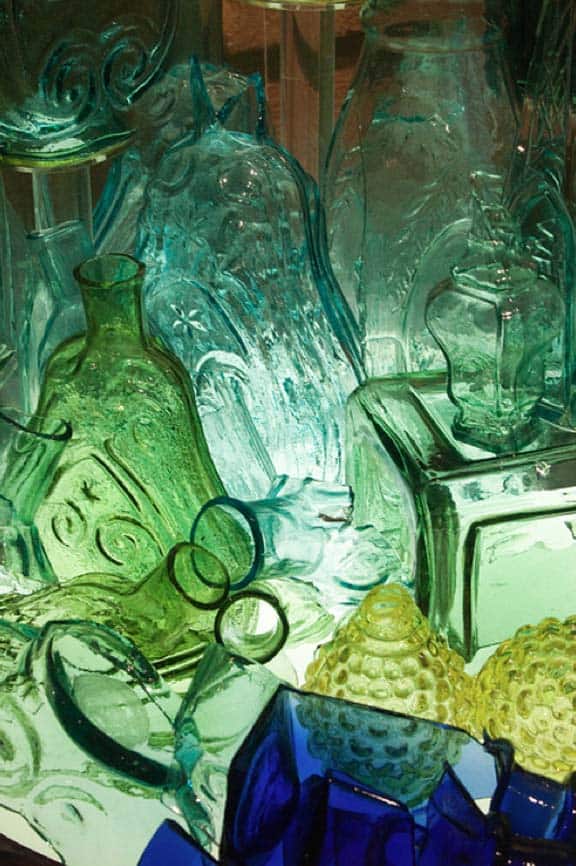
Some of the aqua and green Scroll flasks found on the Steamboat Arabia – Arabia Steamboat Museum
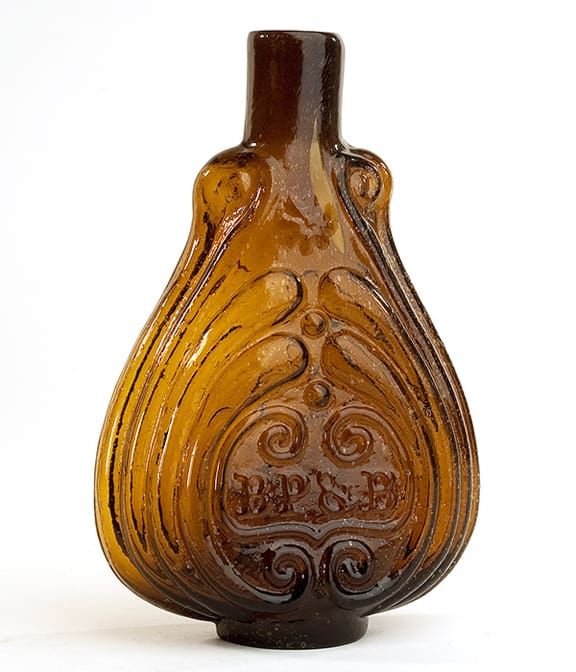
“B P & B” Scroll Flask, Bakewell, Page & Bakewells Glass Manufacturers, 1827 – 1832. Medium golden amber, sheared mouth – blowpipe pontil scar, half pint, GIX-39. A scarce, desirable mold and an exceptional rarity in color with only two or possibly three examples known to exist in amber. In addition, a beautiful example in color, character and condition – Lot 29 – American Glass Gallery | Auction 8
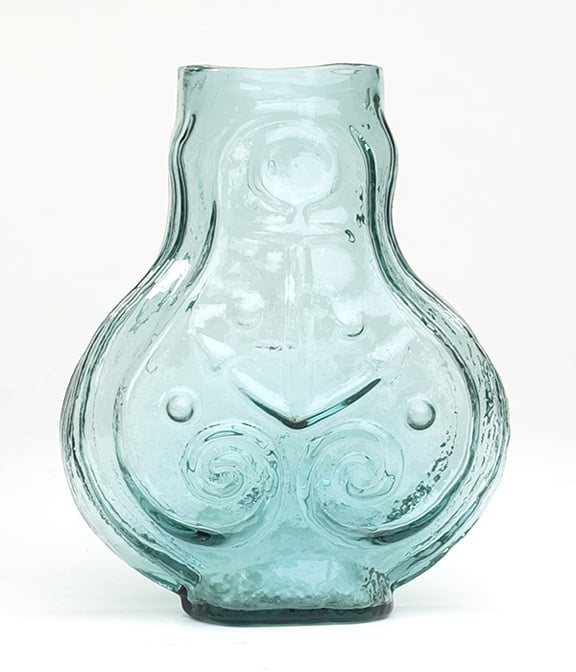
Probably John Robinson & Son Glass Manufacturers, Pittsburgh, Pennsylvania, 1830 – 1834. Aquamarine, sheared, tooled and expanded wide mouth – blowpipe pontil scar, ½ pint, perfect! GIX-41. A very scarce, early and attractive mold to begin with, this example was fashioned by the glassblower into a jar, possibly for snuff. A great rarity and one of only a handful of documented or known flasks that have been made into whimseys or jars. Note: this example is likely one of the earliest of the various Scroll Flask molds and as mentioned, in a unique class with only a handful of other known flasks that were made into snuff jars or whimseys. – American Glass Gallery Auction #9
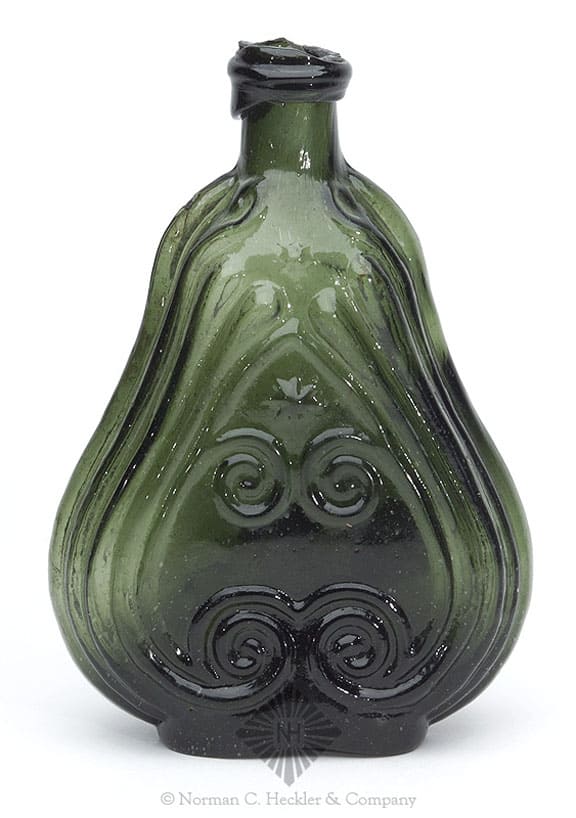
Lot: 32 Scroll Flask, possibly Louisville Glass Works, Louisville, Kentucky, 1845-1860. Deep forest green, crude applied round collared mouth – huge iron pontil mark, pint; (small spot of damage, includes a chip from the upper medial rib on one side accompanied by a hard to see 1 1/2 inch fissure). Probably GIX-11a Beautiful color, displays well, has an extremely crude and interesting mouth application. David Beadle collection. – Norman C. Heckler & Company
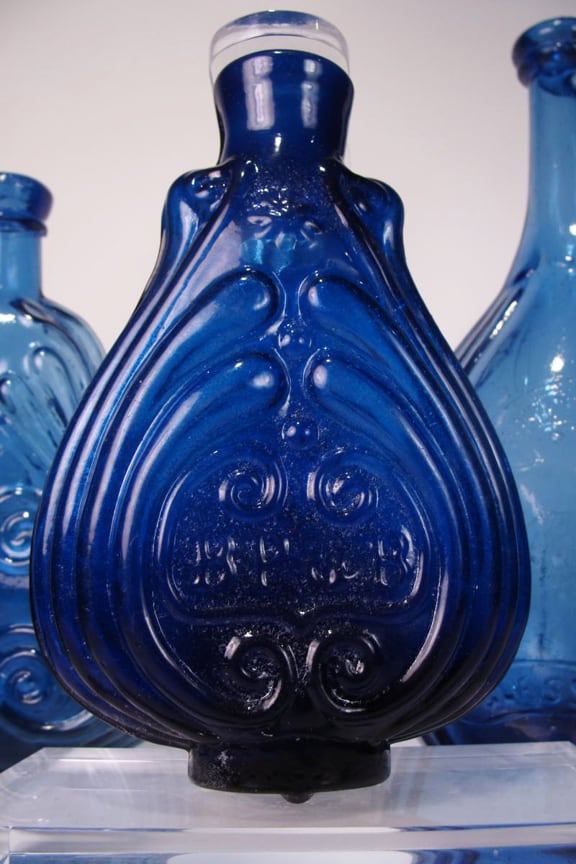
mportant, deep sapphire, GIX-38, embossed BP&B/ Fleur- de- lis, lead glass, Bakewell Page and Bakewell, Pittsburgh, Pa, c.1832, ex. Charlie Gardner, ex. Bill Polard, ½”internal hair line crack on side, seen with loop, otherwise perfect! – The SAXE Collection – Glass International Auction 24
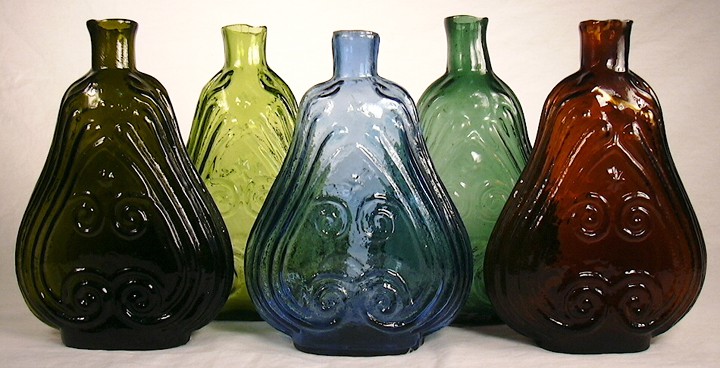
Pint “scroll” flasks in rare colors – American, ca. 1845-1860 – HistoricBottles.com
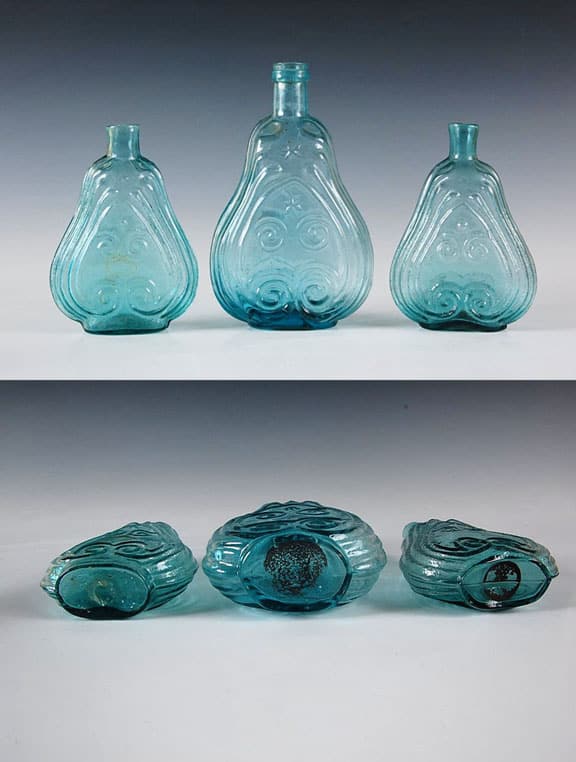
Three Midwestern aqua Scroll flasks showing pontils – Live Auctioneers
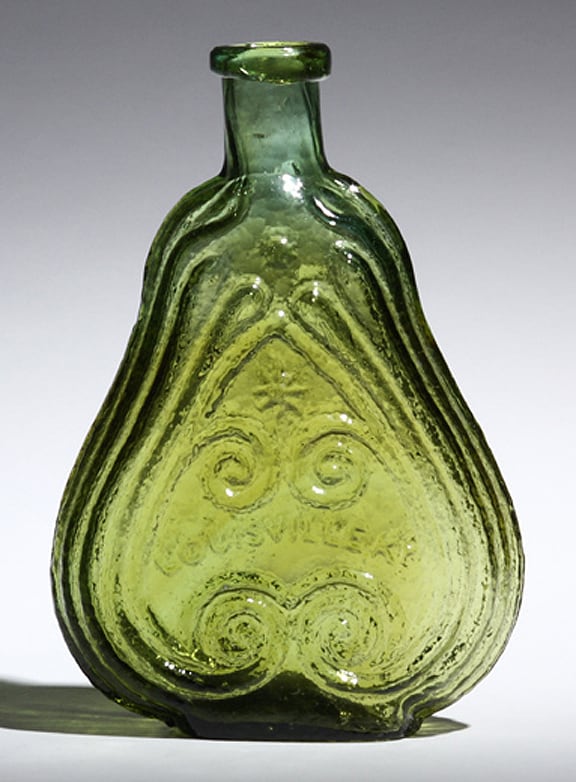
This particular Scroll flask announces that it was made at the Louisville Glass Works, in Louisville, Kentucky, which operated between 1855 and 1874 in a factory opened in 1850 by the Kentucky Glass Works. – Ian Simmonds (Note: The detail picture at the top of this post is the same flask and credited the same)
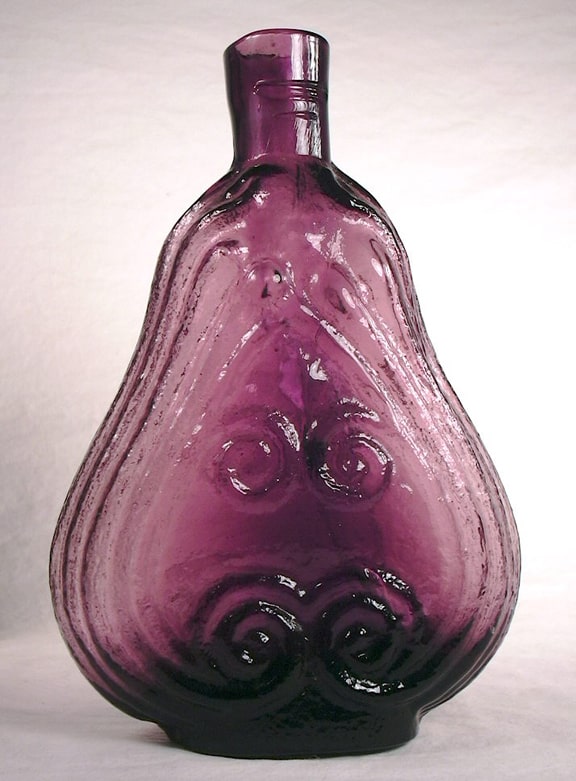
Sure wish this was made in the 1850s, but alas, it is one of the excellent Clevenger Brothers reproductions from sometime in the mid-20th century. Note quite early American, but a reproduction of such. I believe this is an imitation of the GIX-10 pint scroll mold which the company made in the 1950s and 1960s according to McKearin & Wilson (1978). – High Desert
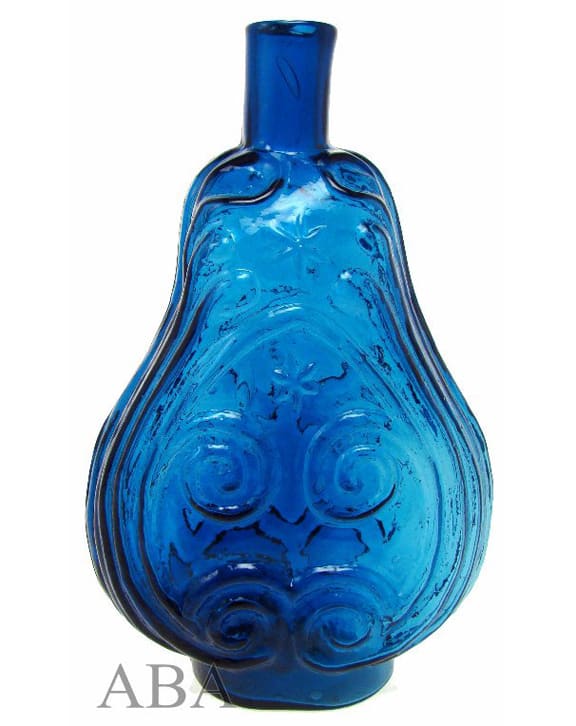
SCROLL FLASK. Probably GIX-2. 9”. Quart with sheared lip and open pontil. Here is one of the finest scrolls we’ve handled in our twenty years of business. Open pontil, sheared lip, this is what collectors are looking for. A brilliant deep blue, the color becomes a little lighter on the opposite side and for sheer overall appearance, this one really lights up a room. Condition is perfect with only base wear to remind us of its historic past. This bottle was part of the California whiskey collection kept in boxes for the last 40 or so years. He told us that it was his wife’s favorite bottle. We kind of like it, too. Grade is 9.8. Winning Bid: $ 17,000
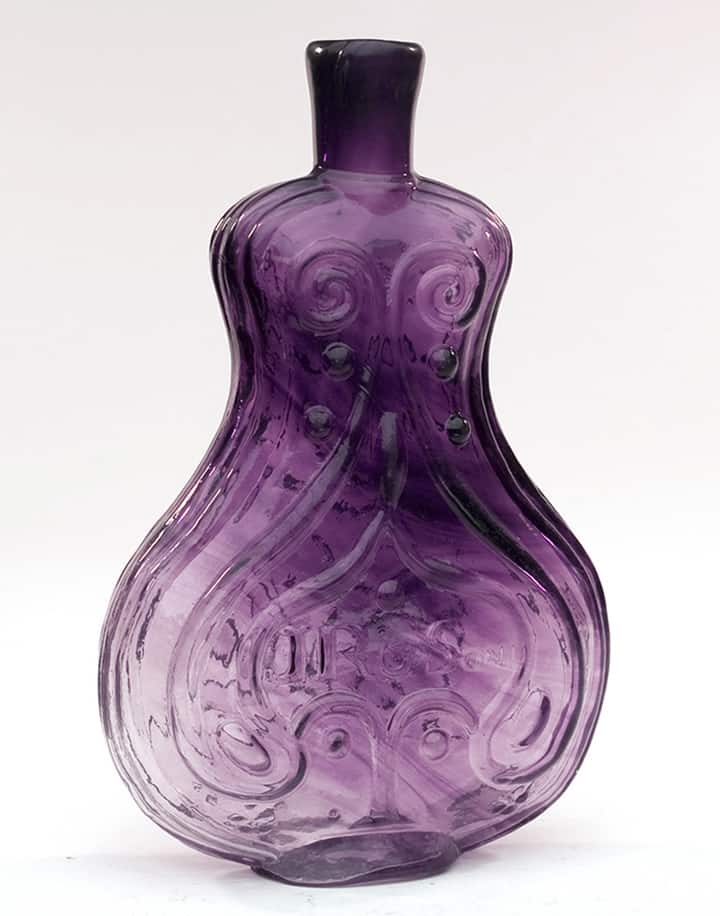
“J R & Son” SCROLL FLASK, John Robinson & Son Glass Manufacturers, Pittsburgh, PA, 1830 – 1834. Beautiful medium amethyst in the shoulders shading to clear, pale amethyst in the lower scroll and foot area, with profuse striations through the center and lower portion of the flask, sheared mouth – blowpipe pontil scar, Pt; (a shallow, approx. ¼” wide, pontil flake that extends to the edge of the base, and some high point wear). GIX-43. An exceptional flask, exceptional color, and eye-appeal. This flask is an exciting, and significant, “fresh” discovery for the antique bottle world. Quoting Jay Hawkins, a well known scholar of Pittsburgh glass and glass manufacturers, and author of the 2009, 550-plus page book, Glasshouses & Glass Manufacturers of the Pittsburgh Region, 1795 – 1910, “At this year’s Baltimore Bottle show on March 8th I had the opportunity to view and hold what is arguably the quintessential bottle or flask produced in Pittsburgh.” The flask is one of only four, or possibly five examples known. Of the four confirmed examples, three are in museum collections, the fourth, and only confirmed privately held example, is the Ex. Fred Salisbury, Ex. George Austin example, with damage. The museum examples include: The Corning Museum of Glass (a very deep amethyst coloration), The Metropolitan Museum of Art in NYC (another dark example), and a lavender example that was in the renowned George Lorimer collection, bequeathed to the Philadelphia Museum of Art in 1938. – American Glass Gallery – Auction 14

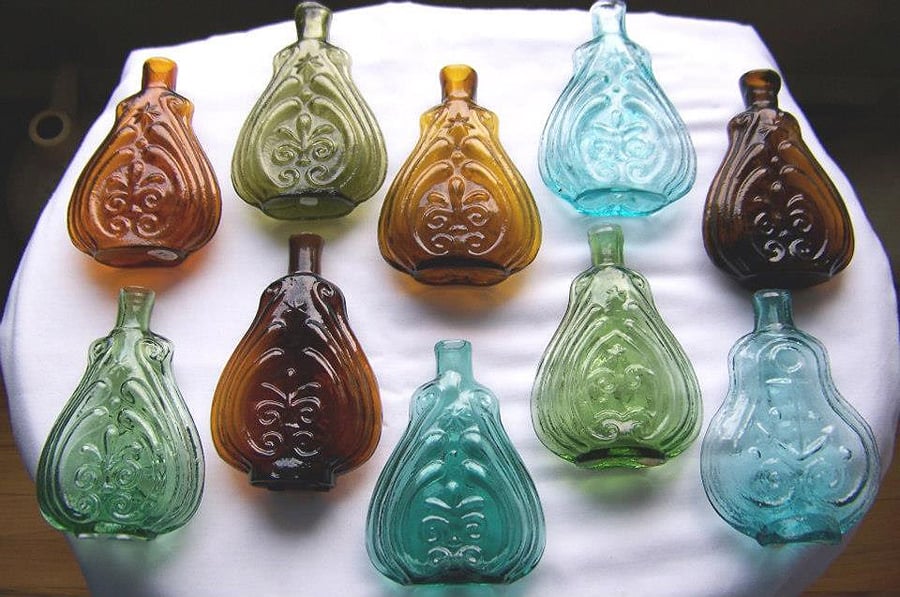
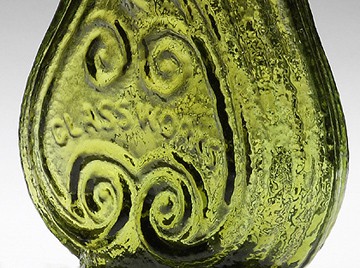
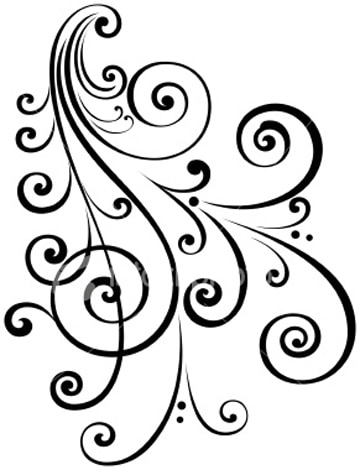
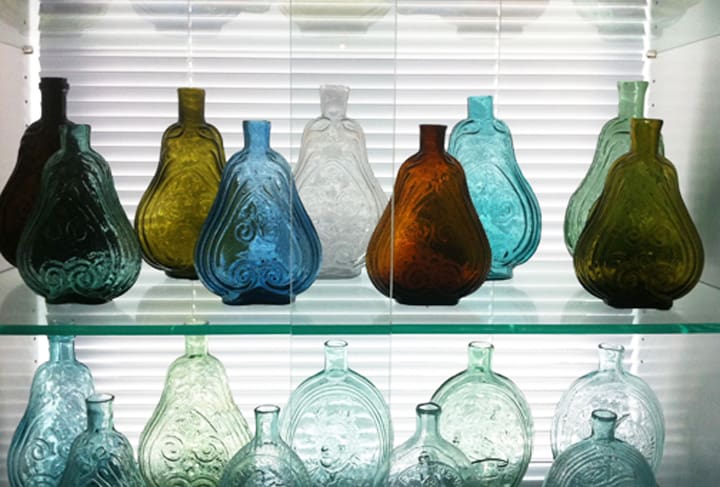
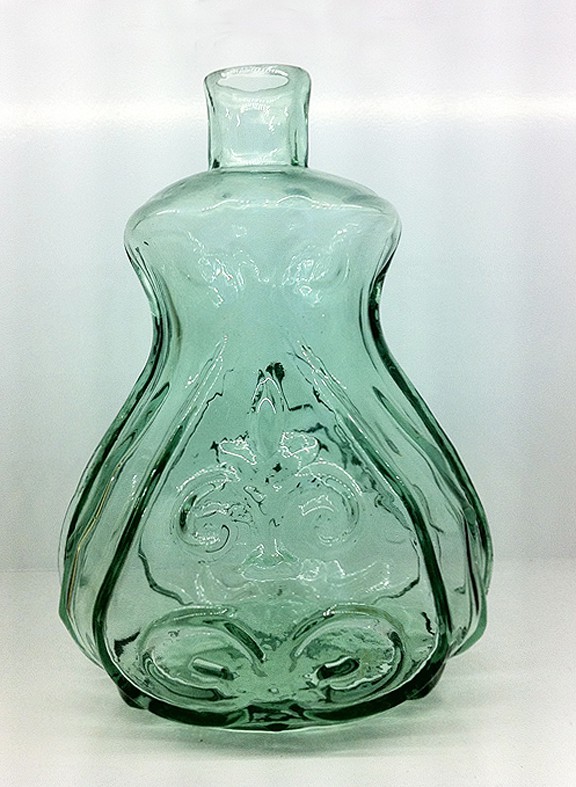
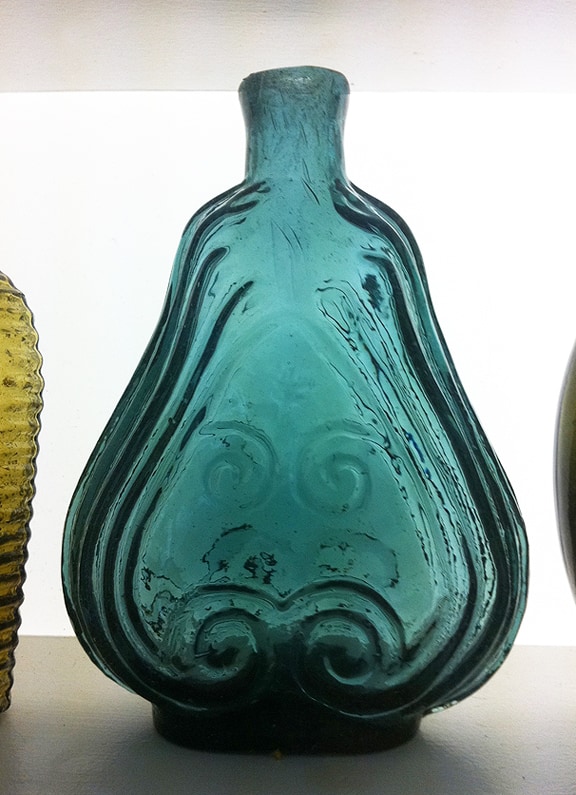
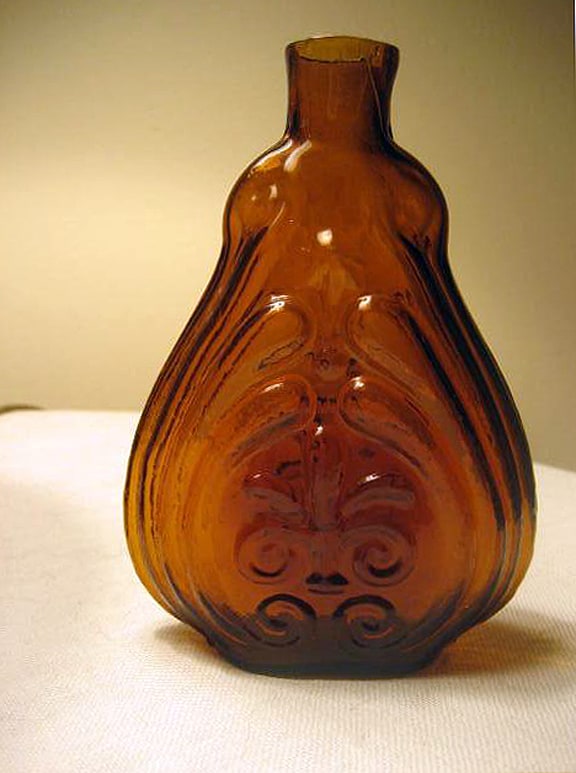









Well look at me I’m a bottle star, rather flattering. Thanks Ferd for putting together this photo-op post that I inspired. Great selection of photo’s and commentary, I can’t even imagine what it would be like to own that BP&B, wowza. A scroll flask was my very first flask purchase, a common aqua quart oh so many years ago now, but with that purchase I had graduated! I was no longer just collecting local / hometown or common bottles. I had now stepped to the next level in my mind, and never looked back (well, I still collect my local / hometown bottles, who doesn’t?) Ever since that moment Scrolls have been a soft spot for me.